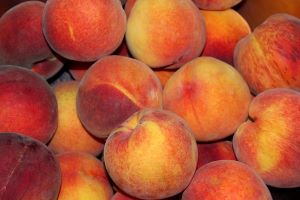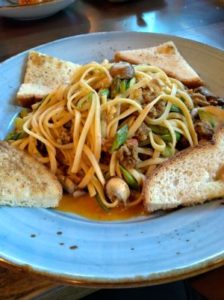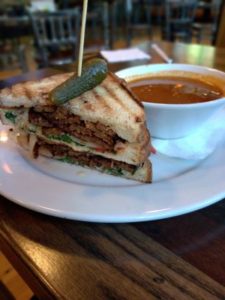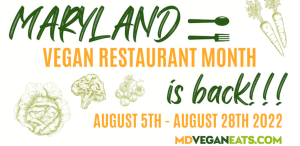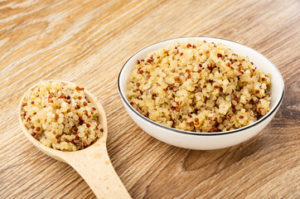Posted on
August 12, 2022 by
The VRG Blog Editor

By Jeanne Yacoubou, MS
In April 2022, The VRG received an email from a reader.
She was concerned about a 2015 VRG blog post on magnesium stearate. In that post, we said: “No examples of tallow-derived magnesium stearate in foods or pharmaceuticals are known.”
The reader commented: “Magnesium stearate in pharmaceuticals is not uncommonly sourced from mammals, and medical products containing magnesium stearate have been associated with life-threatening reactions in people with alpha-gal syndrome.”
What is alpha-gal syndrome?
For readers who may not be aware of alpha-gal syndrome (AGS, also called alpha-gal allergy, red meat allergy, or tick bite meat allergy), the Mayo Clinic reports that AGS is a “…recently identified type of food allergy to red meat and other products made from mammals.” The United States Centers for Disease Control and Prevention (CDC) lists “pork, beef, rabbit, lamb, venison, etc., and products made from mammals (including gelatin, cow’s milk, and milk products)” as potential sources of alpha-gal.
“Alpha-gal” is an abbreviation for a type of sugar molecule, galactose-α-1,3-galactose, found in most mammals, excluding humans. (“α” is the Greek letter, alpha.) It is not found in fish, reptiles, or birds.
Currently, researchers believe that humans acquire the alpha-gal sugar through a tick bite. In some people, the sugar sets off an immune reaction.
If affected individuals later consume any of the animal products listed above, mild to severe allergic reactions, including potentially life-threatening anaphylactic shock, may occur. However, the CDC points out “Not all patients with AGS have reactions to every ingredient containing alpha-gal.” (Bold is CDC’s.)
To date, there is no known treatment for AGS. Prevention, by avoiding tick bites, is key.
What is magnesium stearate?
Magnesium stearate is a common food additive with GRAS status (generally regarded as safe) by the U.S. Food & Drug Administration. It has been used for decades in many foods and beverages including baking products, candy, chewing gum, and spices. Magnesium stearate could function as an emulsifier, binder, thickener, release agent, or anticaking agent in foods and beverages.
Magnesium stearate is also a common inactive ingredient in pharmaceuticals and dietary supplements. In these products, it serves primarily as a lubricant or release agent. In this capacity, it prevents tablets, capsules, or powders from sticking to molding or conveyor belts during manufacturing, or from sticking to packaging after purchase.
Magnesium stearate is made from magnesium (a mineral) and stearic acid (a fatty acid).
Is magnesium stearate derived from animals?
Principal commercial sources of stearic acid used today to make magnesium stearate are cottonseed, coconut, and palm oils. Much less common are animal fats such as tallow or lard.
As of 2022, all of the research on magnesium stearate conducted by The Vegetarian Resource Group (VRG) indicates that plant sources, especially coconut and palm oils, are the major ones used to manufacture magnesium stearate for both food and pharmaceuticals.
For this article, we again contacted several major manufacturers of magnesium stearate in June 2022 to see if anything has changed. We learned:
- From the Roquette website: “For the manufacture of the whole range of its products, Roquette only uses vegetable raw materials like wheat, maize, potatoes, or pea. No additive or ingredient from animal origin is added to Roquette products. No processing aid from animal origin is used for the manufacture of Roquette products.”
magnesium steareate
We also contacted Roquette through their website contact form and asked: “Is your magnesium steareate derived from an animal source?” The company replied: “No raw materials used in the manufacture of Roquette products are of or are derived from animal origin.”
- Acme-Hardesty was very clear on their website: “Magnesium stearate can be derived from both animal fats and vegetable oils. At Acme-Hardesty, our product is entirely plant-based.”
- Mallinckrodtt: Only soy and palm are listed on their website as sources for their magnesium stearate.
- Lupin Pharmaceuticals: We received the following email.
This email is in follow-up to your request for information on Hydrocodone Bitartrate and Acetaminophen Tablets:
You have enquired “Is the source of magnesium stearate in generic Norco (hydrocodone bitartrate and acetaminophen tablets) derived from animals (beef or pork)?”
Below, please find information pertaining to the above topic(s):
“Please note that magnesium stearate used in Hydrocodone Bitartrate and Acetaminophen tablets is not derived from animal sources.”
This information is intended to provide pertinent technical data which will assist you in forming your own conclusions and making your own decisions regarding the use of Lupin Pharmaceuticals products.
Thank you for your interest in Lupin Pharmaceuticals and our products.
-Lupin Pharmaceuticals Medical Information Services
VRG’s researcher wrote the original magnesium stearate entry after contacting major suppliers of magnesium stearate and many companies that use it. Everyone told us that tallow is no longer used as a source. It may have been in the 1990s and previously, but not now. BSE scares and consumer dislike of animal ingredients were the major reasons given to me. (VRG Note: BSE is the acronym for bovine spongiform encephalopathy.)
Thus we used the caveat that none are known to contain tallow. It’s impossible to prove a negative. We can’t say ‘No magnesium stearate today is from tallow.’’Nor can we say ‘All magnesium stearate is plant-based today.’
We asked the inquirer if she knows of a specific case of a product that contains tallow-derived magnesium stearate. Then we can update the entry by listing it.
We were not provided with any specific examples.
We were directed to a clinical communications published in the Journal of Allergy and Clinical Immunology by Dr. Christine Muglia as lead author and several colleagues.
In that letter, Dr. Muglia described the case of a 48-year-old man suspected of having AGS. He appeared to suffer a negative reaction after taking one or more pharmaceuticals, including over-the-counter medications, that contained magnesium stearate as an inactive ingredient.
The patient’s history was recounted in this way:
“He reported that for the last 25 years, he has had episodes of edema of the larynx and tongue, diffuse hives, dyspnea, wheezing, abdominal cramping, diarrhea, edematous testicles, and a sense of impending doom approximately 4 to 5 hours after eating hamburger, steak, or venison. Reactions typically required treatment with epinephrine. The delay in time between eating dinner and the reaction caused a delay in diagnosis for many years. Notably, he had been a hunter since the age of 11 and had sustained countless tick bites over the years.”
Dr. Muglia et. al. wrote in their letter:
“With avoidance of red meats, he has experienced no reactions; however, he has had symptoms with medications that contain magnesium stearate. After taking medications prescribed as a gelatin capsule, including acetaminophen (Tylenol, McNeil Consumer Healthcare, Fort Washington, Pa) and naproxen (Aleve, Bayer HealthCare LLC, Whippany, NJ), he experienced immediate onset diarrhea and chest tightness, which resolved with the use of diphenhydramine (Benadryl, McNeil Consumer Healthcare, Fort Washington, PA). With lisinopril tablets (Aurobindo Pharma Limited, Hyderbad, India), he experienced laryngeal edema, abdominal cramping, nausea, and diarrhea, which resolved after stopping lisinopril. Approximately 3 to 4 hours after taking hydrocodone bitartrate and/or acetaminophen (Vicodin, AbbVie Inc., North Chicago, IL), he experienced hives, which were relieved 4 hours after the use of diphenhydramine (Benadryl). Similarly, he experienced hives after the use of clonidine.”
The VRG investigated all of the suspected pharmaceuticals in the preceding paragraph. We wanted to determine if the magnesium stearate functioning as an inactive ingredient in these drugs had been sourced from an animal, specifically beef.
Source of magnesium stearate in suspected pharmaceuticals
The VRG researched the following five drugs to determine the source of magnesium stearate used: Tylenol, Aleve, lisinopril, vicodin, and clonidine. Our data are summarized in the following table:
| Pharmaceutical |
Source of Magnesium Stearate |
| Tylenol |
No animal byproducts; Synthetic |
| Aleve |
Plant-based |
| Lisinopril |
Plant (2 companies) |
| Vicodin/Norco |
1st company: plant; 2nd company: not animal |
| Clonidine |
1st company: not animal; 2nd company: vegetable origin |
Magnesium stearate in Tylenol
When we first contacted Johnson & Johnson, makers of Tylenol, we asked: “Is the magnesium stearate in the regular strength Tylenol sourced from animals?”
Chris from the Customer Care Center at Johnson & Johnson replied: “We can confirm that the magnesium stearate is synthetic.”
The Vegetarian Resource Group responded: “What do you mean by ‘synthetic’? It could refer to microbial or chemical synthesis.”
Gillian Joy from the Customer Care Center at Johnson & Johnson answered: “Apologies but further information about the source of this is not available.”
A week after receiving this email, The VRG called Johnson & Johnson to attempt to get clarification on their meaning of “synthetic.” We spoke with Erla who stated: “There are no animal byproducts in regular strength Tylenol tablets.” She repeated her co-workers’ info and said – in addition to her previous statement about no animal byproducts – that magnesium stearate is “synthetic.” I asked her to explain synthetic and she said “…not natural; it;s artificial.”
Magnesium stearate in Aleve
The VRG contacted Bayer, the maker of Aleve, and asked: “What is the source of magnesium stearate in Aleve tablets?”
Sheena, Consumer Engagement Specialist at Bayer, replied: “Magnesium Stearate is made up of two substances, a saturated fat called stearic acid and the mineral magnesium. Stearic acid can be found in foods such as eggs, salmon, cotton seed oil, palm oil, and coconut oil.”
We responded: “We’re asking specifically about the source of magnesium stearate in Aleve tablets. Other drug companies say it’s plant-based. Or it could be from beef or pork. What about the source of magnesium stearate in Aleve tablets? I’m not asking about stearic acid and magnesium generally which is what your response is.”
Rory, Consumer Engagement Specialist at Bayer, replied to our email by saying: “After consulting with our brand specialist, they have confirmed that the magnesium stearate is derived from a vegetable source.”
Curious to see how Bayer representatives would respond by telephone, The VRG called and asked about the magnesium stearate in Aleve tablets. We spoke with Sandy who replied: “Magnesium stearate is from egg, salmon, cottonseed, palm, or coconut oil.” When I questioned the accuracy of her statement, Sandy put us on hold to check. She returned to the call and stated “It’s not derived from pork or beef. All five sources are in Aleve.” I asked her to confirm with her supervisor. But we only received a repeat of the previous answer, without a check with a supervisor.
Magnesium stearate in lisinopril
The manufacturer of lisinopril listed in Dr. Muglia’s communication did not respond to our multiple requests for source information about magnesium stearate.
So, The VRG sought information from other manufacturers of this drug.
Prinston Pharmaceuticals sells two formulations of lisinopril. The magnesium stearate in both of them are plant-based. Regarding one formulation from China: “Magnesium stearate used in lisinopril tablets was derived from a plant source.”
Concerning the lisinopril made in the USA: “The source of magnesium stearate in lisinopril tablets is vegetable-based.”
Lupin Pharmaceuticals also makes lisinopril. In response to our inquiry, they replied: “Lupin’s lisinopril tablets do not contain animal material and magnesium stearate used is derived from vegetable sources.”
Magnesium stearate in vicodin
In Dr. Muglia’s communication, AbbVie was given as the manufacturer of vicodin (hydrocodone bitartrate/acetaminophen). When we spoke with AbbVie, John, a Medical Services Specialist, told us that MiKart produces vicodin for them. We called MiKart on three occasions and did not receive a reply.
Mallinkrodt is another company that produces vicodin and norco, a similar drug containing the active ingredients hydrocodone bitartrate and acetaminophen. Both are listed on page 10 of their generics catalog.
The first time we called, a customer service representative told us that magnesium stearate in norco “could be animal-based” but she wasn’t sure. She connected us with Chrissy in another department who said the magnesium stearate in a 5mg/325mg (hydrocodone bitartrate/acetaminophen) dosage of norco was beef-derived. No mention of stearic acid was made.
A couple of weeks later, The Vegetarian Resource Group called to verify this information. Anita on the general customer call line didn’t know for sure and put us through to Chrissy again.
This time, Chrissy said that the magnesium stearate in the two dosages we had specified (10mg hydrocodone bitartrate)/325mg acetaminophen) for both norco and vicodin was plant-based. This is in agreement with the Mallinckrodt website page on the stearates that they sell. They are all soy- or palm oil-derived.
However, this time, Chrissy informed us that stearic acid was also in both norco and vicodin. Their stearic acid was derived from beef.
When The VRG asked why the sources of stearic acid and magnesium stearate were different, Chrissy stated “Our ingredient supply changes. At the current time, the stearic acid we use is from a beef source…But all of the stearates we produce for other pharmaceutical manufacturers are plant-based.”
The VRG also contacted Lupin Pharmaceuticals, another manufacturer of norco. On two separate occasions, Lupin informed us that both magnesium stearate and stearic acid in their product is not derived from animals. In their own words:
“…magnesium stearate used in hydrocodone bitartrate and acetaminophen tablets is not derived from animal sources.”
“…stearic acid used in hydrocodone bitartrate and acetaminophen 5mg/325mg tablet is not derived from any animal origin.”
Magnesium stearate in clonidine
Dr. Muglia’s communication on alpha-gal mentioned clonidine as another drug taken by the patient suspected of having AGS. However, no manufacturer was given.
So, The VRG investigated drug companies to find out information on the magnesium stearate used in clonidine.
Teva Pharmaceuticals told us that “magnesium stearate is not derived from animal sources” in their clonidine.
Lupin Pharmaceuticals also manufactures clonidine. They wrote to us: “Magnesium stearate used in clonidine is derived from vegetable origin.”
Stearic acid as well as all stearates may be of concern in alpha-gal syndrome
The clinical communication sent by Dr. Muglia and colleagues to the Journal of Allergy and Clinical Immunology did not even mention the possibility that stearic acid could be responsible for adverse allergic reactions in people with AGS.
In fact, Dr. Muglia et. al. stated in the letter about their patient:
“The correlation between his reactions to meat and to these medications suggests that the medication reactions may have been due to alpha-gal in the magnesium stearate. Alpha-gal has not been definitively found in magnesium stearate, as this study has yet to be conducted. The correlation is theoretical…Our patient’s reactions to gelatin capsules do not allow us to isolate magnesium stearate as the cross-reactive allergen, because gelatin is also a meat byproduct. His reaction to lisinopril tablets that contain magnesium stearate, but not gelatin, makes the case stronger for cross-reaction between alpha-gal and magnesium stearate, but still does not confirm it.”
She and her team were preoccupied with magnesium stearate only.
Likewise, the email we received from the reader spoke only of magnesium stearate as a potential trigger for alpha-gal syndrome. She said nothing about stearic acid.
This is a perfect example of narrow thinking in science. It occurs when you’re fixated on only one item and nothing else – even the possibility, in this case, of chemical cousins possessing the same capability of causing an adverse allergic reaction as the targeted chemical.
In response to our reader who indicated: “Magnesium stearate in pharmaceuticals is not uncommonly sourced from mammals…,” based on this investigation, we learned the opposite.
From what companies are telling us, magnesium stearate in pharmaceuticals is uncommonly sourced from mammals. Magnesium stearate in pharmaceuticals is commonly plant-based. If you learn of a company that uses an animal source, please let us know. Stearic acid in pharmaceuticals, on the other hand, could be beef-derived, as one company told us about their version of norco.
However, since Lupin Pharmaceuticals reported that stearic acid in their norco was not animal-derived, it’s possible that stearic acid in other drugs is also non-animal sourced.
Note: The VRG contacted Dr. Muglia for this article in May 2022 since the journal communication listed her as the corresponding author. The email address in the article is no longer current. We tracked her down at the medical practice where she is currently on staff. She has not responded yet.
Cautions about stearic acid and magnesium stearate in pharmaceuticals and food products
Through our research, The VRG must caution all people with alpha-gal syndrome (AGS) that it’s important to look into all inactive ingredients of all drugs (including over-the-counter products) with “stearic” OR “stearate” in their names.
Because both stearic acid and stearates are food and beverage ingredients, too, be sure to read all food labels very carefully. To be on the safe side, you should consult with your doctor on whether you should avoid all these products. Also, contact the company to confirm. Readers may be interested in our previous research into magnesium stearate in confections.
Our tips for getting ingredient information from food companies may be helpful.
Often, a food or dietary supplement company will specify the source of ingredients on their product labels. This is not required by law. Nor is it required by law on pharmaceutical labels.
All consumers should also be aware that when patents expire, many different generic versions of drugs enter the market.
Unless you request a specific manufacturer, your pharmacy may select any manufacturer depending on their supply and/or what your insurance dictates.
Nor may a pharmacy be able to meet your request all the time. In addition, a pharmacy’s supply could change from refill to refill.
Another likely possibility is the manufacturer’s sources of ingredients could change at any time – without public announcement.
So, The VRG recommends you contact the drug manufacturer listed on the bottle in your hand about any ingredients before taking it.
Be sure to emphasize that you’re concerned about all inactive ingredients with “stearic” or “stearate” in their names in the drug at a certain dosage. Be sure to specify the dosage. (VRG Note: Calcium stearate is another example of an inactive ingredient with “stearate” in its name.)
If you’re not speaking with a pharmacist when you call, do not assume customer service representatives know what you’re talking about. Ask to see a copy of the list of all inactive ingredients. Then ask about specific ones on the list.
If you’re still unsure about the accuracy of what customer service representatives tell you, ask to speak to a supervisor.
The contents of this posting, our email, our website and our other publications, including Vegetarian Journal and Vegan Journal, are not intended to provide personal medical advice. Medical advice should be obtained from a qualified health professional. We often depend on product and ingredient information from company statements. It is impossible to be 100% sure about a statement, info can change, people have different views, and mistakes can be made. Please use your best judgment about whether a product is suitable for you. To be sure, do further research or confirmation on your own.
